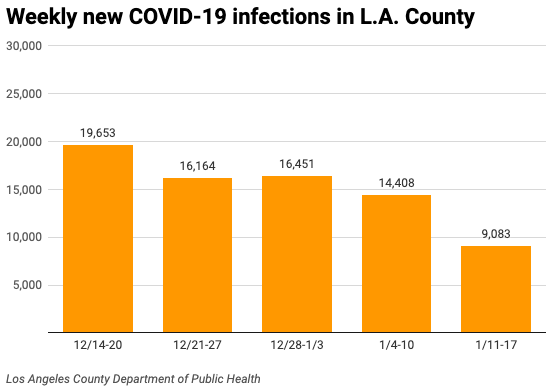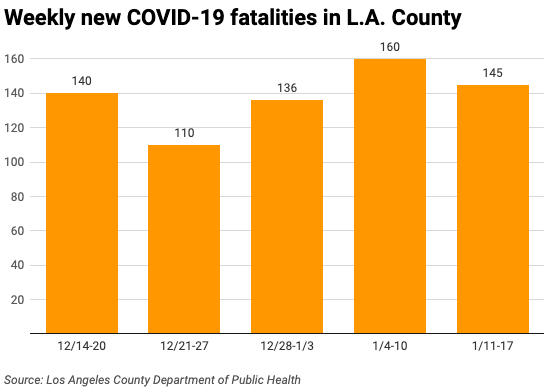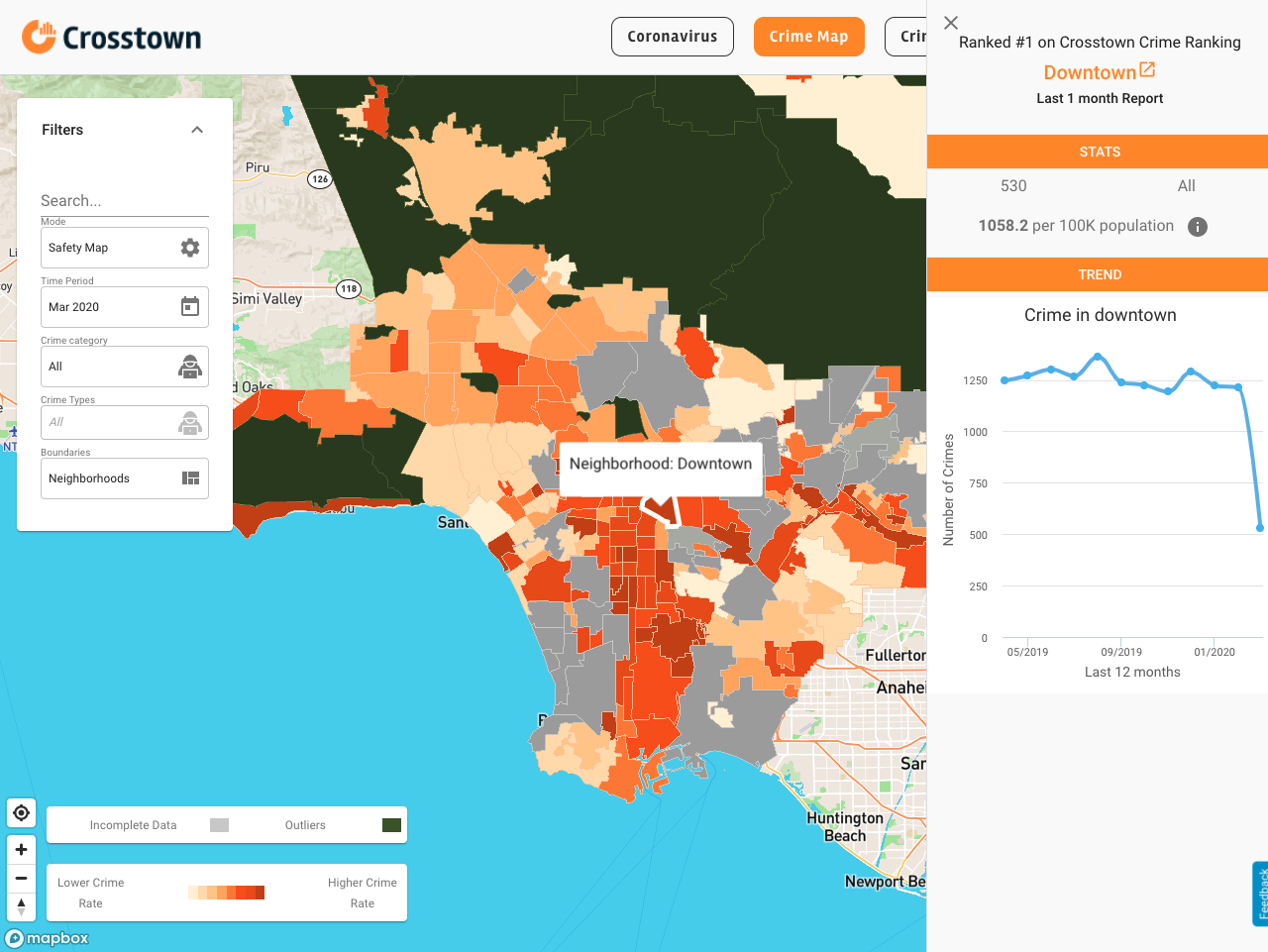5 things to know about COVID-19 this week
![]()
The state of the pandemic in Los Angeles County is constantly changing. To stay up to date, Crosstown each week examines the latest COVID-19 data and metrics. Here is what you need to know.
1) Cases continue declining
Average COVID-19 cases are about half what they were at the beginning of the new year.
From Jan. 11–17, the Los Angeles County Department of Public Health reported 9,083 new cases. That marks a 37% decrease from the week before. This is also the first time that the weekly case tally has been below 10,000 since mid-November.

On Tuesday, the seven-day average for cases in Los Angeles County was 1,298.
2) Fatalities remain consistent
Although cases are falling, deaths are staying level, and they still remain high for Los Angeles County. This continues to reflect the spike in infections that began after Thanksgiving.

On Tuesday, the seven-day average was 21 fatalities per day, marking a 10.5% increase from two weeks ago. The daily high was the 30 deaths on Jan. 11.
The week also brought the breaking of an unsettling barrier. On Tuesday, Los Angeles County surpassed 35,000 deaths due to COVID-19 since the beginning of the pandemic. Nearly 17,000 of them occurred in 2021.
3) New year, lower numbers
There is a big difference between this January and those in 2022 and 2021, and it’s not just rainfall totals.
Key coronavirus metrics this month are a fraction of what they were at the same time in the last two years. As referenced above, the seven-day case average is under 1,300, and in a recent week there were fewer than 10,000 total cases. In January 2022, the rapid spread of the Omicron variant was producing stunning counts. For instance, one year ago today, on Jan. 20, 2022, there were 42,115 infections. The next day brought 43,091 new cases.
[Get COVID-19, crime and other stats about where you live with the Crosstown Neighborhood Newsletter]
Deaths are also much lower this year. While the current seven-day average of 21 fatalities is troubling, it is far below levels at this time in the past two years. On Jan. 20, 2022, there were 102 deaths reported by the Department of Public Health. The next day there were 65.
Even that barely compares with our first COVID winter, before vaccines were widely available. On Jan. 20, 2021, the region suffered 262 deaths. The next day also brought 262 fatalities.
The situation is similar with hospitalizations. There are now fewer than 1,000 COVID-19 patients in L.A. County hospitals. One year ago at this time the number was around 4,800. On Jan. 20, 2021, there were 7,253 people in the region hospitalized with COVID-19.
4) Where it hits the hardest
While most numbers are improving, and many people operate as if the pandemic is over, some individuals continue to be at greater risk if they contract COVID-19.
Hospitalization rates for people 80 and older are about three times higher than for those in the 65-79 age group, according to a recent Department of Public Health statement. The death rate for residents 80 and older is nearly five times higher than it is for people who are 65-79.
Angelenos living in areas with high rates of poverty are also disproportionately affected by COVID-19. According to the Department of Public Health, in a 90-day period ending Jan. 3, “Hospitalization and death rates are nearly double for people living in the county’s poorest neighborhoods, where more than 30 percent of households live in poverty, compared to those residing in the wealthiest neighborhoods.”
5) Lots of shots
The pace of vaccinations remains slow, despite the entreaties by health leaders for people to get the bivalent shot. What makes this even more troubling is that there is plenty of opportunity and availability: According to the state of California COVID-19 Vaccine Provider Dashboard, Los Angeles County has 300,953 vaccine doses on hand. That is the highest number of any county represented.
The dashboard has other interesting data points, including that Walgreens stores across the state have more than 500,000 available doses.
It’s hard to expect that the frequency of people taking shots will increase. Since mid-November, weekly vaccine totals have remained below 2,000, according to the Los Angeles County COVID-19 Vaccine Dashboard.
Only 16.1% of county residents ages 5 and older have received the updated booster.
How we did it: We analyzed coronavirus data related to new cases, deaths, hospitalizations and vaccinations provided by the Los Angeles County Department of Public Health, as well as data from the California Department of Public Health.
Interested in our data? Check out the Crosstown coronavirus interactive map or email askus@xtown.la.






